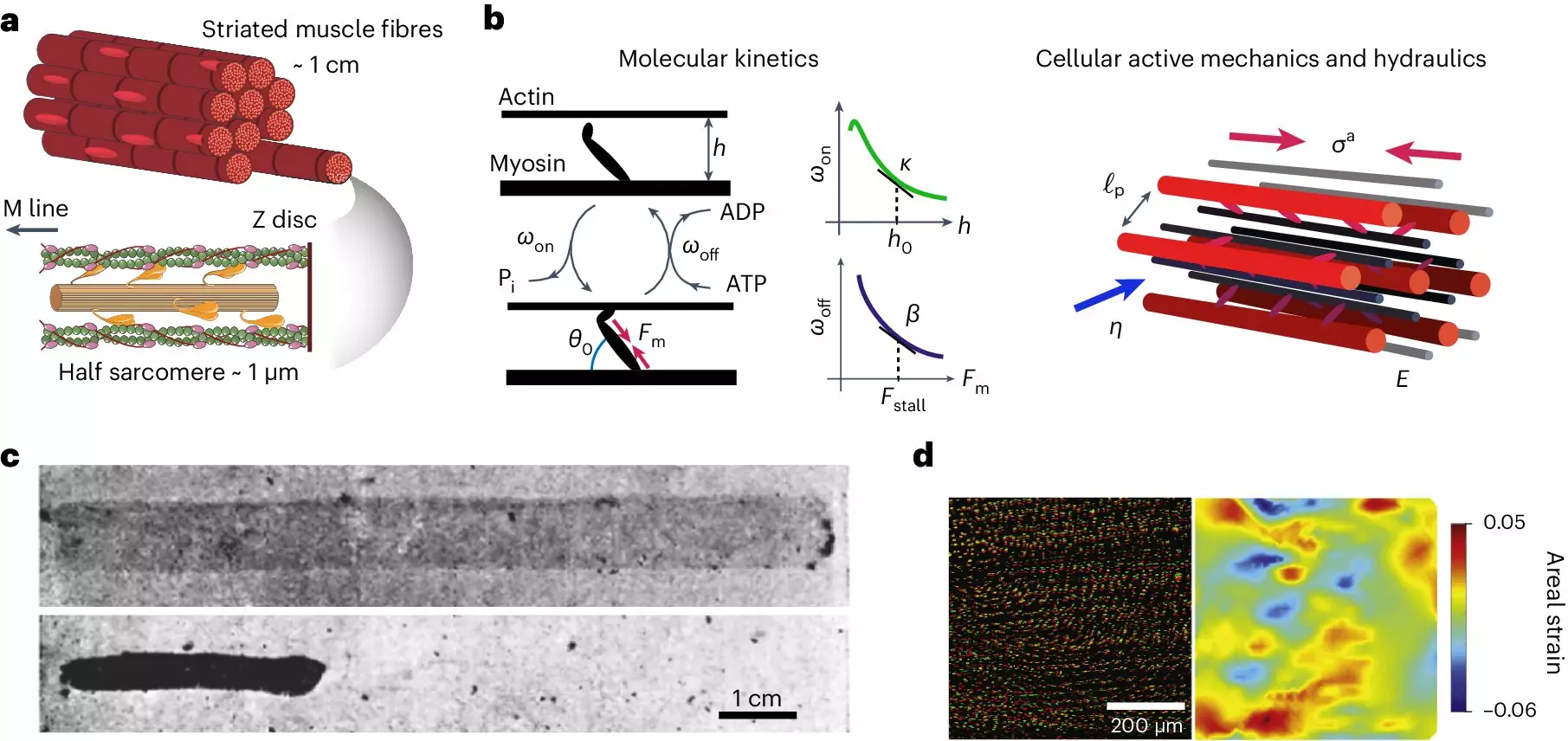Recent advancements in muscle biomechanics have unveiled a groundbreaking perspective on how muscles function, challenging long-held beliefs that focused primarily on molecular interactions. A study led by physicists from the University of Michigan, in collaboration with Harvard University, suggests that the flow of water within muscle fibers is a critical factor that can dictate the speed and efficiency of muscle contraction. This revelation not only reshapes our understanding of muscle performance but also emphasizes the inherent complexity of biological structures.
Traditionally, muscle has been viewed as a mere assembly of proteins and cells, where the molecular level dictated performance capabilities. However, this new research pushes for a paradigm shift: it advocates for an integrated approach that encompasses the three-dimensional structure of muscle fibers and acknowledges the significant role of fluid dynamics. This approach goes beyond simply acknowledging water as a component of muscle tissue; it serves as a driving force in the contraction process itself, embodying a revolutionary view of muscle physiology.
Odd Elasticity: Redefining Muscle Mechanics
The researchers’ findings introduce the concept of “odd elasticity,” which allows for unique power generation through three-dimensional deformation. Unlike typical elastic materials where energy is conserved—think of a rubber band that returns to its original shape after being stretched—the behavior of muscle fibers is governed by more intricate dynamics. When a muscle fiber contracts lengthwise, it simultaneously bulges outwards, a phenomenon not observed in solid elastic materials. This property allows muscle fibers to act as active elastic engines capable of producing power through repetitive deformation.
This revelation is particularly significant because it highlights how energy is not conserved in the same way as in conventional elastic materials. Instead, muscle fibers showcase a complex interaction between mechanical energy and fluid dynamics, pushing the boundaries of what we know about biomechanics and energy transfer within biological systems. The study’s authors assert that this new understanding can help us unravel the mysteries surrounding muscle performance limits in various organisms.
The Impact of Fluid Flow on Muscle Performance
A key finding from the study is the observation that the flow of water through muscle fibers contributes to their contraction speed. As the researchers conducted simulations across multiple species—including mammals, birds, reptiles, and insects—they discovered a fascinating dichotomy. Large animals like rattlesnakes, which possess muscles that can contract quickly to produce sounds, do not show a dependence on fluid flow; instead, their rapid movements are governed by neural control and molecular properties of muscle contractions.
Conversely, in smaller organisms such as certain insects—where contraction rates can ascend to several hundred times per second—the control over muscle contractions becomes less reliant on the nervous system and more influenced by the properties of fluid flow. This distinction is essential in understanding muscle efficiency across species and how evolutionary adaptations might optimize performance in varying contexts. The researchers propose that these rapid contractions in smaller organisms could be approaching a theoretical limit dictated by fluid dynamics.
Revolutionizing Muscle Physiology
This study calls into question the prevailing view of muscle physiology that has long prioritized molecular details. By shifting the focus to a holistic view that considers the muscle as an active sponge-like structure, the findings suggest that our understanding of muscle function must evolve. Researchers assert that the complexity of muscle fibers—incorporating proteins, organelles, and fluids—plays a significant role in determining function and performance.
With this new perspective, we can begin to appreciate that muscles are dynamic systems, not merely constituent parts acting independently. Emphasizing the interconnected nature of these components could lead to innovative approaches in fields such as rehabilitation, sports science, and bioengineering, where harnessing the full potential of muscle performance is crucial.
The University of Michigan’s exploration into muscle contraction represents a paradigm shift that transcends traditional research methodologies. It suggests that to understand muscle function, one must embrace the intricate interplay of molecular characteristics, structural organization, and fluid dynamics. By acknowledging that muscles are more than just sacks of chemicals, we can unlock new pathways for research and application, potentially revolutionizing the future of biomechanics and enhancing athletic performance.

